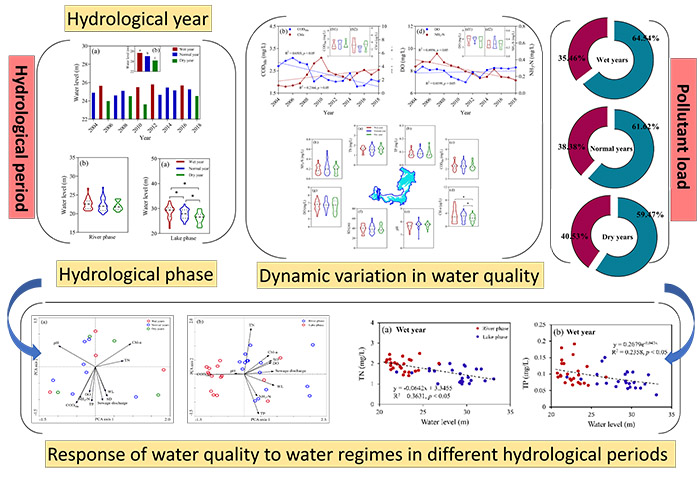Researchers Reveal the Differences in Water Quality and Its Driving Factors during Different Hydrological Periods in Dongting Lake, China
Lakes are essential components of global hydrological and biogeochemical cycles, and influence many aspects of ecology, economy, and human welfare. River-connected lakes are characterized by high-frequency hydrological rhythms. The water quality in such lakes may be more sensitive to variation in the complex hydrological environment, resulting in variability in lake water quality during different hydrological periods. Detailed understanding of the relationship between water quality and water regimes in river-connected lakes in different hydrological periods is vital for providing pollution control measures.
A team of researchers from the Institute of Subtropical Agriculture (ISA) of the Chinese Academy of Sciences studied the differences in water quality and its driving factors during different hydrological periods in Dongting Lake, China.
The difference in water level in different hydrological years was primarily due to the difference in water level in the lake phase. Total nitrogen concentration exhibited significant differences in hydrological years, which was mainly related to the contaminant loads and water level regulation, whereas the water quality of Dongting Lake in different hydrological phases clearly separated the lake and river phases, and confirmed the significant effect of water level fluctuations on water quality within a year. The contributions of the lake phase to the total sewage discharge successively decreased from 64.54% in wet years to 59.47% in dry years, while the river phase showed the opposite trends. The strict control of excessive external nutrient loading should be actively implemented, and the regulation should be gradually enhanced with the typical features of different hydrological periods in a comprehensive manner.
The study was titled “Is water quality better in wet years or dry years in river-connected lakes? A case study from Dongting Lake, China” and published in Environmental Pollution. It was supported by the Joint Fund for Regional Innovation and Development of NSFC, the Youth Innovation Promotion Association of CAS, the Water Conservancy Science Project of Hunan Province, the Changsha Science and Technology Project.
Contact: Li Feng
E-mail: lifeng@isa.ac.cn
Institute of Subtropical Agriculture, Chinese Academy of Sciences.

Figure. 1. Water quality dynamics and its driving factors in Dongting Lake during different hydrological periods.(Image by Mingming Geng)
Download attachments: